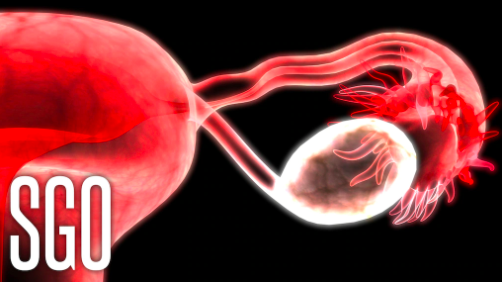By Chase Doyle
Treatment with olaparib is safe and effective for patients with platinum-sensitive relapsed ovarian cancer, regardless of the number of prior lines of chemotherapy received and BRCA mutation status, according to data presented from the phase II LIGHT study by Karen A. Cadoo, MD, at the Society of Gynecologic Oncology (SGO) 2021 Virtual Annual Meeting on Women’s Cancer.
Secondary efficacy results from the trial demonstrated CA-125 responses and complete responses across all four patient cohorts: germline BRCA–mutated, somatic BRCA–mutated, homologous recombination deficiency (HRD)-positive, and HRD-negative disease.
Consistent with previous studies, the greatest efficacy was observed in the BRCA-mutated cohorts, with similar findings for germline and somatic BRCA mutations. For patients without a BRCA mutation, greater efficacy with olaparib was seen in patients with HRD-positive disease.
“Objective response rates and progression-free survival with olaparib treatment were generally consistent irrespective of the number of prior lines of chemotherapy received,” said Dr. Cadoo, a medical oncologist at Memorial Sloan Kettering Cancer Center. “Our findings are consistent with the previously reported primary analysis of this study.”
For patients with platinum-sensitive relapsed ovarian cancer, platinum sensitivity acts as a biomarker for poly (ADP-ribose) polymerase (PARP) inhibitor sensitivity, and olaparib maintenance therapy has demonstrated efficacy regardless of BRCA mutation status. More recently, said Dr. Cadoo, results of the phase III SOLO3 trial showed that treatment with olaparib was effective for patients with BRCA-mutated platinum-sensitive ovarian cancer who have received at least two prior lines of platinum-based chemotherapy.
LIGHT Study
The LIGHT study assigned patients with platinum-sensitive ovarian cancer to cohorts based on their BRCA mutation status (germline or somatic) and HRD status (positive or negative based on genomic instability score). All patients received olaparib monotherapy: 300 mg tablets twice daily.
Of the 272 patients enrolled, 271 received olaparib; 270 had measurable disease at baseline and were included in the efficacy analyses. A total of 176 patients were evaluable for CA-125 response.
Although CA-125 responses were observed across all four cohorts, said Dr. Cadoo, the greatest efficacy was seen in patients with BRCA-mutated disease, with similar findings for germline and somatic BRCA mutations. In these cohorts, CA-125 response rates were 93% for germline BRCA and 70% for somatic BRCA, while CA-125 complete response rates were 68% and 60%, respectively.
Median time to any disease progression was also greatest in the BRCA mutation cohorts and was approximately 11 months, said Dr. Cadoo. Among patients with BRCA wild-type ovarian cancer, greater efficacy was seen in the HRD-positive cohort than the HRD-negative cohort.
Key Points
- Secondary efficacy results from the phase II LIGHT study demonstrated effective CA-125 response and time to any progression for patients with platinum-sensitive relapsed ovarian cancer treated with olaparib.
- Subgroup analyses showed that objective response rate and progression-free survival on olaparib were generally consistent, irrespective of the number of prior lines of chemotherapy.
Disclosure: This study was funded by AstraZeneca and is part of an alliance between AstraZeneca and Merck Sharp & Dohme Corp, a subsidiary of Merck & Co.
This article was published by The ASCO Post.


